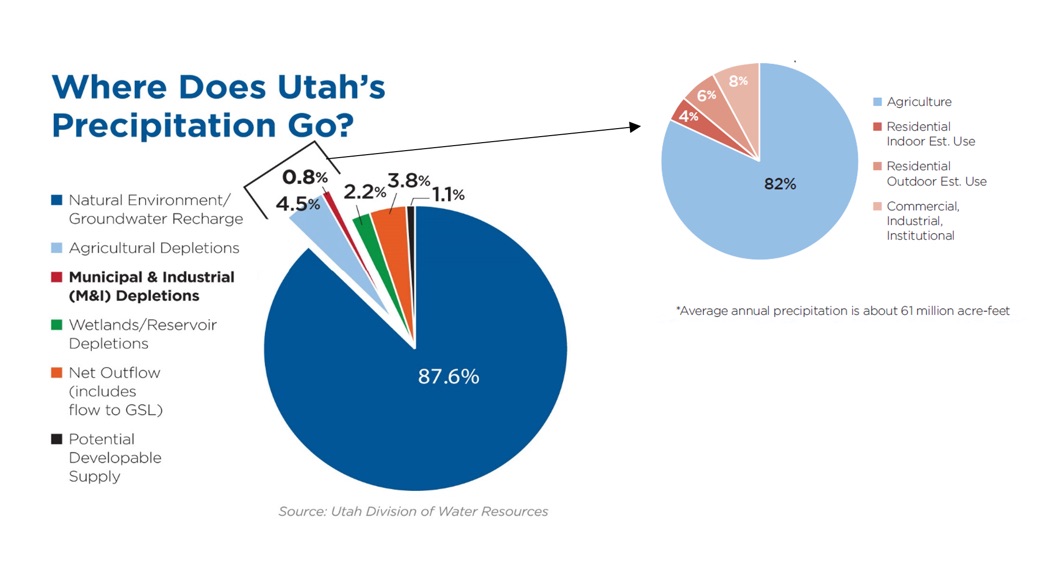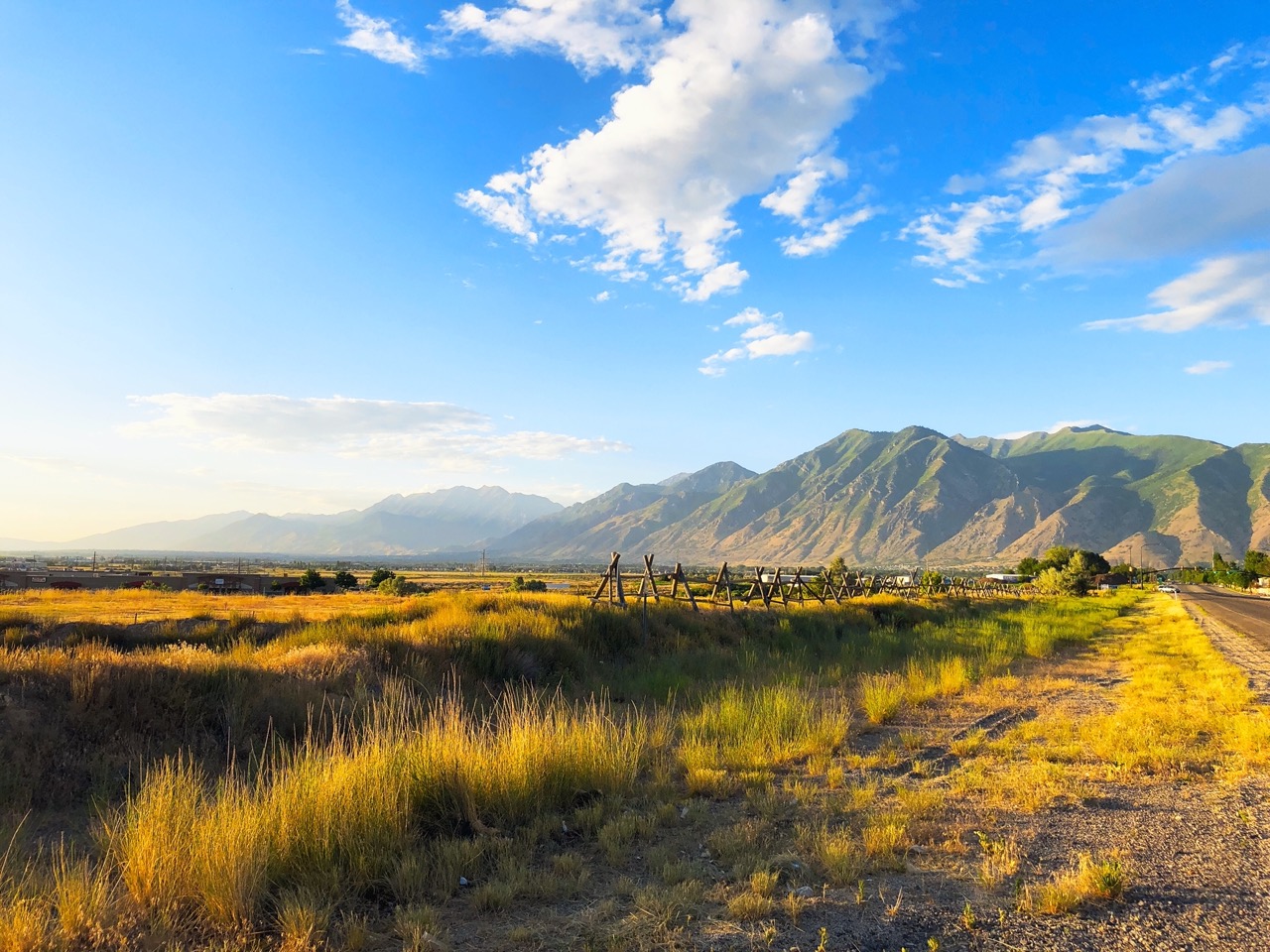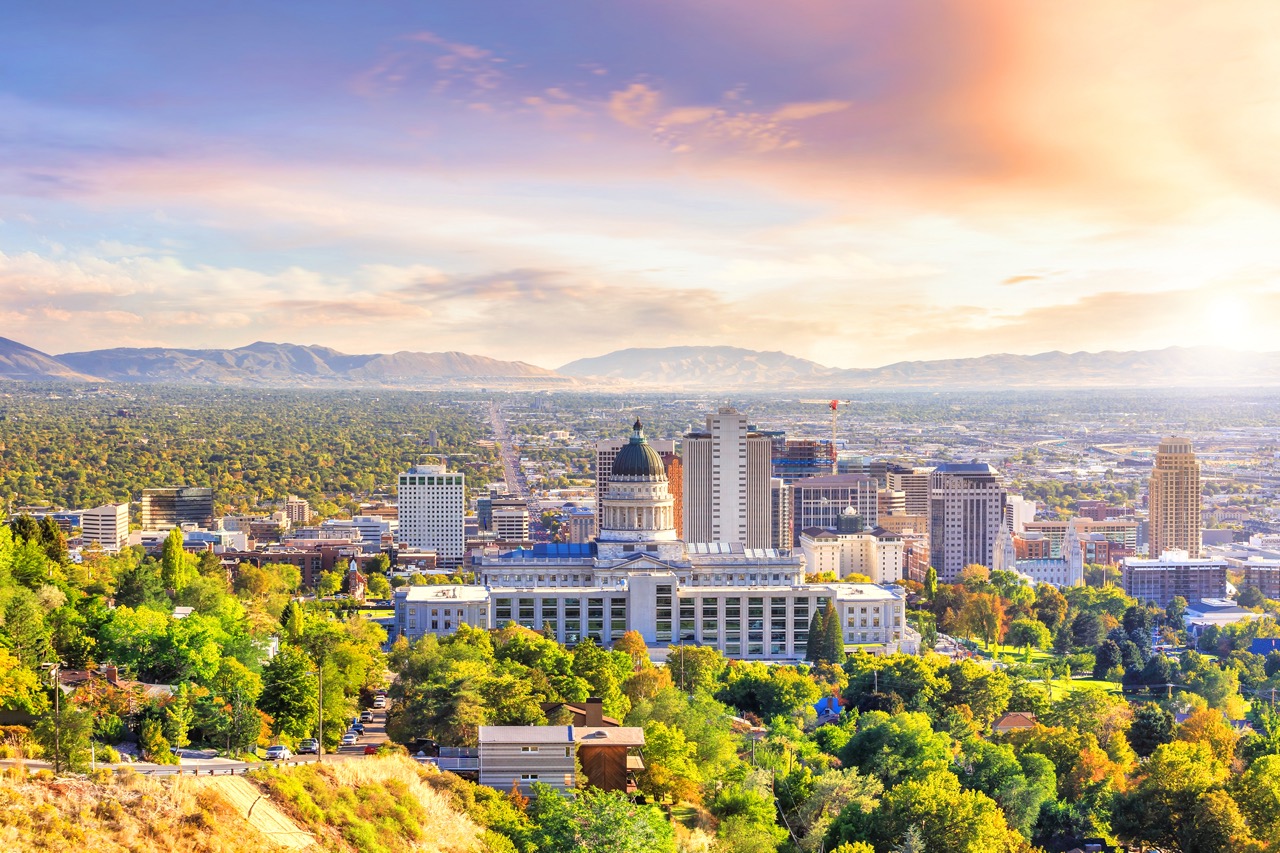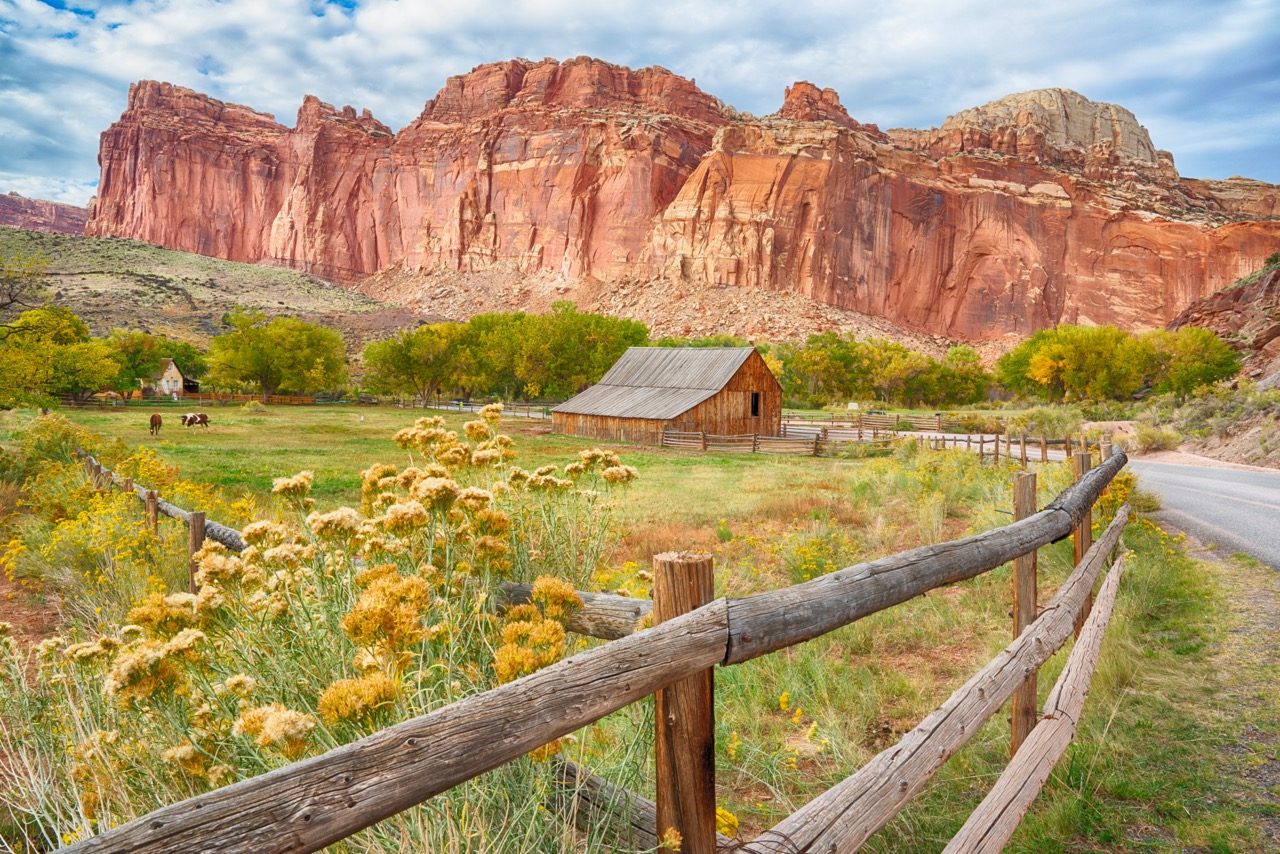By law, water of the state belongs to the public. However, the state determines who has a right to divert water and how it is used.
Out of all the water received each year, only 5.3% (the equivalent of more than five million acre-feet) is diverted from Utah’s natural water systems and delivered to agricultural, residential, commercial, institutional, and industrial customers.
Water use in Utah is layered with separate processes involving rights, infrastructure, distribution, and management. No single agency has complete control over the diversion, delivery, and use of water in Utah.

Federal Roles
On the federal level, there are three primary entities that deal with water issues:
- Army Corps of Engineers – plays a minor role in Utah mainly issuing permits for proposed projects that will release water into sources protected by the federal Clean Water Act.
- Bureau of Reclamation – built many of Utah’s existing large water infrastructure projects using the model of providing financing and the users pay the federal government back from water sales and the sale of electrical energy produced by the water project.
- Environmental Protection Agency – provides and enforces water quality and drinking standards.
During the past century, the federal government played a major role in water projects across the west, financing a third of all municipal and industrial water infrastructure in Utah. However, as federal funding for water steadily declines, state and local government will have to assume additional financial responsibility in building new infrastructure and repairing and replacing regional systems.
State Roles
 On the state level, there are several governmental entities that plan or regulate water:
On the state level, there are several governmental entities that plan or regulate water:
- Division of Water Resources – provides comprehensive water planning, protects state’s rights to interstate waters, and manages Utah’s revolving loan funds for water development projects.
- Division of Water Rights – led by the state engineer, regulates water rights and oversees the distribution of water in Utah.
- Division of Water Quality – enforces federal and state water quality standards to protect Utah’s rivers, streams, and ground water from pollution; manages Utah’s revolving loan fund for water quality projects.
- Division of Drinking Water – enforces and oversees drinking water standards for public water systems, and manages Utah’s revolving loan fund for drinking water projects.
- Colorado River Authority of Utah – directs planning, policy, and use management of Utah’s share of the Colorado River and collaborates with peer agencies in the six other Colorado River Basin states.
Local Roles
 Cities’ roles in water have become more critical as they are often at the center of development needs and the interface of the entire water system for the end user. Cities set rates for residential and business customers and are also on the front lines of conservation efforts including educating, incentivizing, and promoting reduced water use among residents.
Cities’ roles in water have become more critical as they are often at the center of development needs and the interface of the entire water system for the end user. Cities set rates for residential and business customers and are also on the front lines of conservation efforts including educating, incentivizing, and promoting reduced water use among residents.
Municipalities get water from rights they own or from a wholesaler, which have the capability to divert and store water in reservoirs and transport large amounts of water over large areas. Wholesalers typically sell water to other entities, like cities and irrigation companies, not to end users. They have power to develop, treat, and provide water to meet the needs prioritized by elected officials and communities. Examples include the water conservancy districts and metropolitan water districts. In Utah, all wholesalers are public entities.
Retailers are water entities that provide water to end users within a designated area or group of customers. Retailers typically dictate the rates end users pay. Examples include municipalities, water improvement districts, and some water conservancy districts.
Other local retailers of Utah water include:
- Improvement District – sells primarily culinary water and some secondary water to residents within the improvement district.
- Irrigation District – originally created to provide irrigation water within a district, but now often runs secondary water systems for non-agricultural retail customers.
- Special Service District – a separate legal entity controlled by a municipality or county that may be created to provide water service within a designated area.
- Drainage District – created to drain irrigation water away from irrigated crops.
Private Roles
Private water systems generally get water from private wells and may deliver to many users or one business.
- Nonprofit corporations, irrigation companies, canal companies – members given shares in exchange either for their individual water right and/or their labor to build the water infrastructure needed to put their water right to beneficial use. The development of the Sevier River, Bear River, Weber River, and Provo River have been developed by these nonprofit corporations.
Some of the oldest water delivery systems in the state were built for agricultural water supplies, and because they were the first water users, most senior water rights in Utah are owned by agricultural interests. As communities matured, water rights and applications for new water sources were transferred into nonprofit corporations.
- Water Developers – individuals or organizations that are able to take ingenuity, labor, and capital, and create a water supply that can be put to beneficial use.
 Many of the water right owners certified by the State are individuals. Control of a large amount of water rights makes that owner a player in the water industry, whether individual or entity. The Church of Jesus Christ of Latter-day Saints is one of the largest water owners in the state of Utah.
Many of the water right owners certified by the State are individuals. Control of a large amount of water rights makes that owner a player in the water industry, whether individual or entity. The Church of Jesus Christ of Latter-day Saints is one of the largest water owners in the state of Utah.
- For Profit Corporations - sell water to users with rates need regulated by the Public Service Commission. Draper Water Pro and Holliday Water are examples. The concept of selling stock to raise capital to build the infrastructure and then utilize the profits from the use of the developed water to make a profit has been tried, but has not been widely used.
Water Organizations
A variety of associations have been developed to assist their membership deal with various water issues. The following is not a comprehensive list:
- Utah Water Users Association - oldest water user organization in the state. Originally composed of mostly irrigators; however, now includes more municipal & industrial users.
- Rural Water Users Association - large membership from municipal water users in rural Utah, but also includes urban municipalities. It is especially water utility driven.
- Utah League of Cities & Towns - source for training and advocacy for their members with water utilities.
- Associations of Irrigators/Canal companies - irrigation and canal companies have combined into advocacy groups for their respective interests.
- Prepare60 - four largest water conservancy districts that collaborate on statewide water planning; source for water policy development.
